by infracolor™ (via http://flic.kr/p/pr7Qkk )

by infracolor™ (via http://flic.kr/p/pr7Qkk )

by infracolor™ (via http://flic.kr/p/pr7Qkk )

20141018 (via http://flic.kr/p/pr7LCa )

20141017 (via http://flic.kr/p/prcTcJ )

#188 Xiaxia Yuan

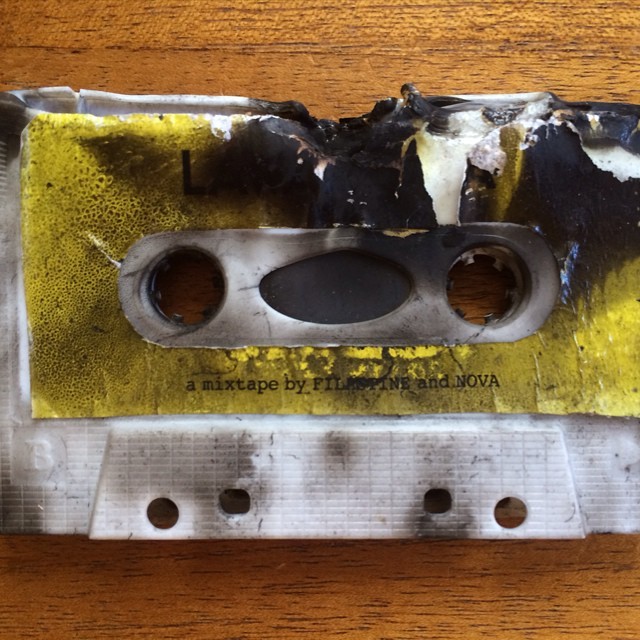
LAWANLUPA/APHASIA cassette. get them while they’re hot https://postworldindustries.bandcamp.com/album/aphasia (via http://instagram.com/p/uSt7vaoQ4Z/)


A German bunker in Kirkenes. (via http://instagram.com/p/uNa6MAQK2R/)

Rainy days in Brooklyn - 2014 (via http://instagram.com/p/uOAtDaojXG/)
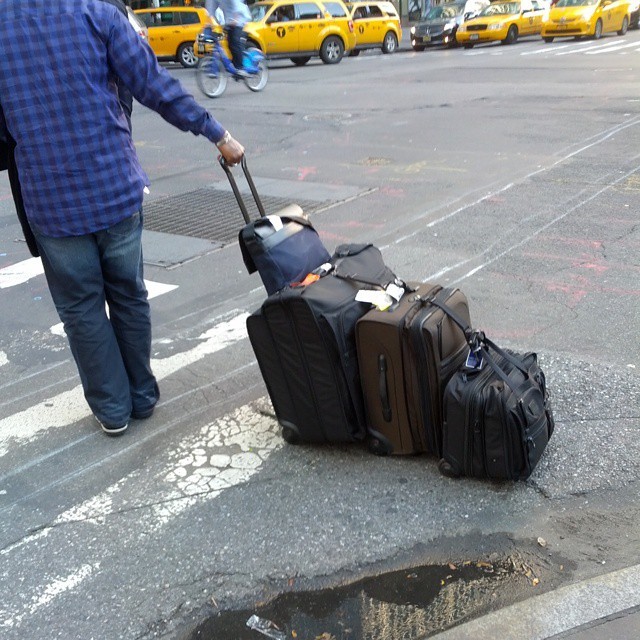

Fishery in Huyluang Dam with sunset (เขื่อนห้วยหลวง) by noomplayboy (via http://flic.kr/p/kJ9dE3 )

featured friend by GOO ROT ☾ (via http://flic.kr/p/o1UL22 )

07-2 (via http://flic.kr/p/pGg2SZ )


Happy sheep at Vik by berichi (via http://flic.kr/p/fqxeuU )

Bjørnsund by berichi (via http://flic.kr/p/cHDu3G )
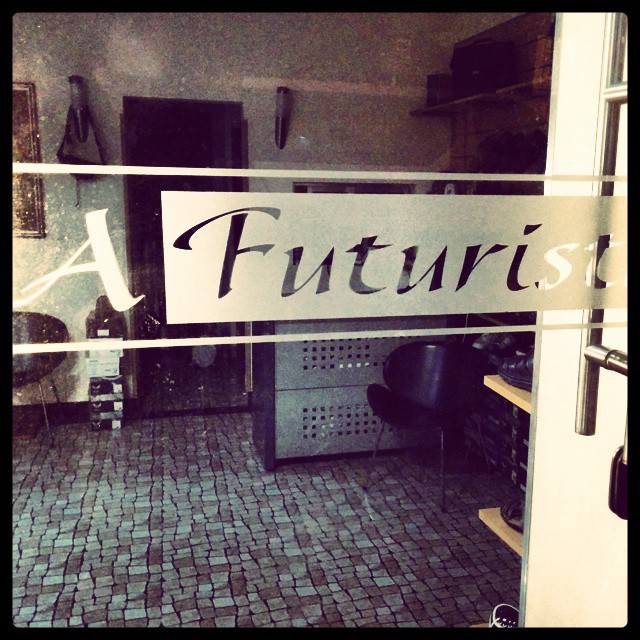
A Futurist (via http://instagram.com/p/t0rv-BPtss/)
“The Arctic silence is loud, and I strain my ears to take it all in. It’s not often you hear something close to absolute silence, and it is an arresting and moving sound.”
–Chris Lowery
“Should any society that can’t deal with the waste it produces be allowed, allow itself, to produce anything new? Why should we be celebrating the creative use of computers, electronics, media systems, when they are simply plastic wrapped condensations of heavy metals and other poisons? Can we imagine a technology that is able to disentangle itself from technocracy, the idea that all the world’s problems can be solved by the application of a narrow band of productised science?”
–Matthew Fuller
“On my London rooftop I have five People’s Hives, a system devised by a French clergyman Abbé Warré (1867-1951) to be simple, economical and bee-friendly. […] The People’s Hive is a simple series of identical boxes with wooden bars at the top which politely suggest to the bees where they might conveniently start building their comb – no compulsion, the bees are wild animals and will do what they like!”
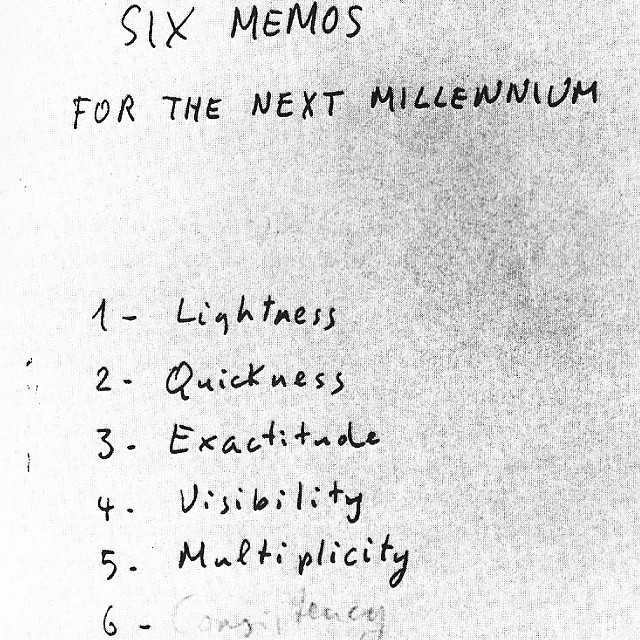
man who spoke wonders - #italocalvino - 15 October 1923 to the forever - six memos for the new millennium - as relevant as ever (via http://instagram.com/p/uMs_l7wSxd/)

nood pressphoto (1996) by Purple Tao (via http://flic.kr/p/5rARqG )
“Since everything just is what it is, yet is never as it seems. You might as well burst out laughing”
–Timothy Morton
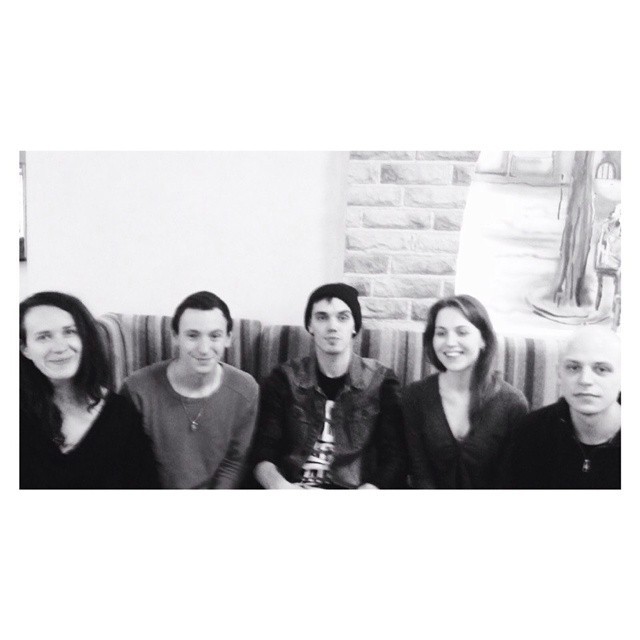
Вы не представляете на сколько крута это фотография (via http://instagram.com/p/uHItubiEPr/)
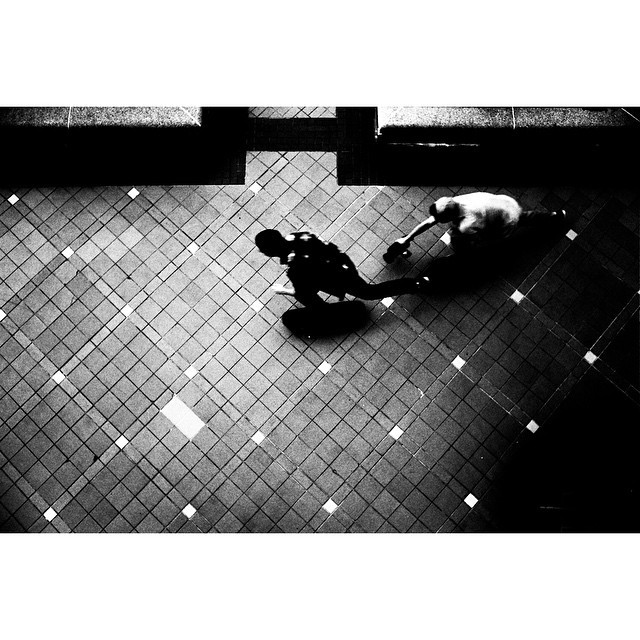
Bangkok - 2011 (via http://instagram.com/p/uLQ4HIojVT/)
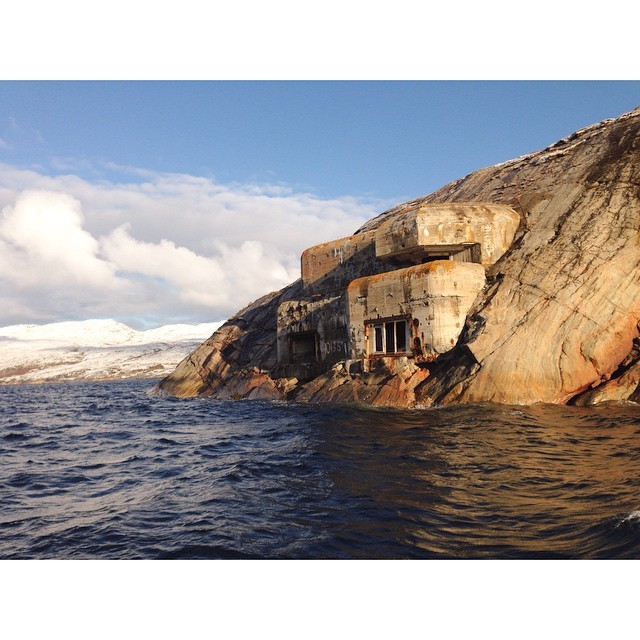
Немецкий военный бункер, выдолбленный во фьорде глубиной в 200 метров на границе с Россией. Во время 2 Мировой немцы обстреливали русских торпедами отсюда. (via http://instagram.com/p/uI003drufS/)

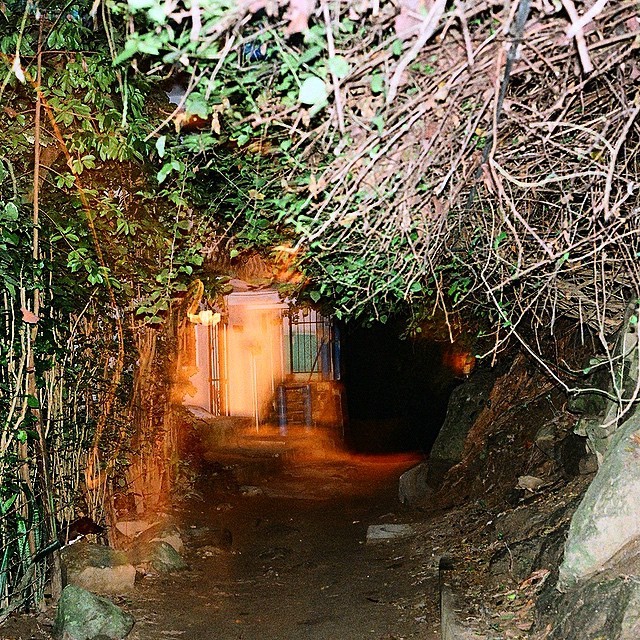

Dragon’s Teeth (via http://instagram.com/p/uKig6YPCC8/)

L1015233 (via http://flic.kr/p/poRdnv )
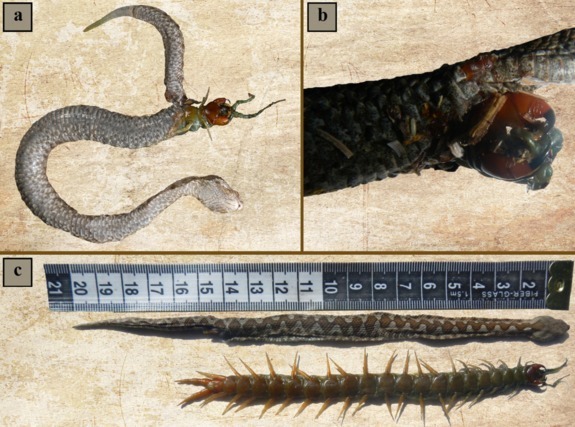

Rosetta mission selfie a distance of about 16 km from the surface of 67P/C-G. Credits: ESA/Rosetta/Philae/CIVA
In an attempt to codify cloud vocabulary and aid in weather prediction, the World Meteorological Association (WMO) published the first International Cloud Atlas in 1896. The Atlas divides clouds into 10 genus, 26 species, and 31 varieties, and includes important tips for cloud identification as well as appropriately whimsical descriptions—cloud species range from praecipitatio, “to fall (down a precipice)” to castellanus, “a castle of a fortified town.” Though many updates and new editions have been published since, no new cloud types have been added to the Atlas since cirrus intortus (“an entangled lock of hair”) was added in 1951. Until now.
http://www.slate.com/blogs/atlas_obscura/2014/10/10/undulatus_asperatus_a_new_cloud_type.html
Today in “You can’t make this shit up”: Baker Hughes, a giant oil-field services company that provides hydraulic fracturing (“fracking”) products and services, has donated $100,000 to the Susan G. Komen Foundation in support of breast-cancer research. And in the most egregious example of pink-washing we’ve ever seen, the company is producing 1,000 pink drill bits that will “serve as a reminder of the importance of supporting research, treatment, screening, and education to help find the cures for this disease.” There’s at least one weird little thing about this pairing: Fracking, one of the services that Baker Hughes provides and the drill bits are used for, has some serious links to cancer itself.
http://nymag.com/daily/intelligencer/2014/10/fracking-co-makes-pink-drill-bits-for-cancer.html
“Beyond its impact on human well-being, however, food is equally deeply entwined with ecological health. While Rhinehart daydreams about a future in which Soylent is synthesised by algae in energy-neutral bioreactors, for now, its raw ingredients are purchased from a variety of sources across the US and China. An educated consumer might guess at the possible growing and processing conditions behind the eggs, broccoli and chicken thighs in their shopping basket but, in the case of Soylent’s chemical constituents, the dislocation is complete: the world’s largest manufacturer of the ergocalciferol (Vitamin D2 on Soylent’s ingredient list) is a factory in China’s Sichuan province, whose raw material is grease derived from Australian sheep’s wool.”
–Would we opt out of food if given the chance? – Nicola Twilley – Aeon (viaiamdanw)
Relaxing the null hypothesis makes for great storytelling, but it’s an unsettling way to live. Which information and which perspectives we take into account, when we try to decide whether a pattern we’ve matched is real or an apophenic false alarm, affects our ability to determine whether something has gone away or whether we’ve just stopped believing in it. In the praxis of science we try to keep the false alarm rate down with things like study size and statistical inference and meta-analyses and replication, and we still get it wrong a lot.
https://medium.com/@maradydd/the-null-hypothesis-loves-you-and-wants-you-to-be-happy–3189413d8cd0
“
“The smoke of the burned witches still hangs in our nostrils.” Certainly the witch hunters are no longer among us, and we no longer take seriously the accusation of devil worshipping that was once levelled at witches. Rather, our milieu is defined by the modern pride in being able to interpret both witchery and witch hunting in terms of social, linguistic, cultural, or political constructs and beliefs. What this pride ignores, however, is that we are the heirs of an operation of cultural and social eradication – the forerunner of what was committed elsewhere in the name of civilization and reason. Anything that classifies the memory of such operations as unimportant or irrelevant only furthers the success of those operations. In this sense, our pride in our critical power to “know better” than both the witches and the witch hunters makes us the heirs of witch hunting.
–Isabelle Stengers.Reclaiming Animism
“Reclaiming animism does not mean, then, that we have ever been animist. Nobody has ever been animist because one is never animist “in general,” only in terms of assemblages that generate metamorphic transformation in our capacity to affect and be affected – and also to feel, think, and imagine. Animism may, however, be a name for reclaiming these assemblages, since it lures us into feeling that their efficacy is not ours to claim.”
–Isabelle Stengers.Reclaiming Animism
Of the thirty ancient living things that Sussman has photographed, two have since died. “One was a thirteen-thousand-year-old ‘underground forest’ outside a botanical garden in Pretoria,” she said. “Apparently, they changed the traffic pattern and just bulldozed right over it. The other was a thirty-five-hundred-year-old tree just outside Orlando, Florida—actually, the original tourist attraction before Disney. Meth heads snuck into it to do meth, and they accidentally burned it down.
“If you have a tech conference called “The state of the network” in 2014/15/16 in which speakers and audience travel from different parts of the country/world to talk/hear about how the network is making things better, then we’ve all clearly failed.”
–Rev Dan Catt, ‘Conference Eaters’ (2014)
“In conlusion, there is no conclusion. Things will go on as they always have, getting weirder all the time.”
–Robert Anton Wilson, Principia Discordia (viaburningonyx)
“all those incompatible things that only by reason of their coexistence are called“the universe.””
–Jorge Luis Borges
“The second thing this question makes me think of comes back to my own definition of the professional artist as a “middle-class creative laborer.” Most working people just don’t have any say in the creative content of their own labor; that’s part of the definition of being a worker, you trade your labor to someone else and they get to tell you what to do. So, the idea that there is a category of person in society who both gets to do, to a certain extent, what they want and make money doing it takes on some kind of special aura because it is an exception: precisely because most people are alienated in their work, the dream of being an “artist” takes on some exaggerated societal importance as an image—even though the reality for most “working artists” is more complex, and most people who call themselves “artists” actually make money somewhere else.”
–How Small It Actually Is, Alex Zafiris interviews Ben Davis - Guernica / A Magazine of Art& Politics (viaphotographsonthebrain)
The government-financed Thai Delicious Committee, which oversaw the development of the machine, describes it as “an intelligent robot that measures smell and taste in food ingredients through sensor technology in order to measure taste like a food critic.” In a country of 67 million people, there are somewhere near the same number of strongly held opinions about Thai cooking. A heated debate here on the merits of a particular nam prik kapi, a spicy chili dip of fermented shrimp paste, lime juice and palm sugar, could easily go on for an hour without coming close to resolution.
The Masdar City model seems difficult to reproduce: too isolated, too expensive, too empty. The embryo town appears rather as a symptom of the obsession of a state with regard to its future. What will become of this territory, once the hydrocarbon reserves underneath its soil are depleted? In response, the frenzied builders attempt to inscribe life in a permanent fashion on a land that seems hostile to human existence. It is about facing the fear of death by building quickly (an “instant city”), to help transition to an Emirates that is a techno-ecological leader. Masdar City is meant to be the laboratory. Opening soon
Since we’re agent engineers, my husband and I tend to think agents are great. Also, we’re lazy and stupid by our own happy admission — and agents make us a lot smarter and more productive than we would be if we weren’t “borrowing” our brains from the rest of the internet. Like most people, whatever ambivalence we feel about our agents is buried under how much better they make our lives. Agents aren’t true AI, though heavy users sometimes think they are. They are sets of structured queries, a few API modules for services the agent’s owner uses, sets of learning algorithms you can enable by “turning up” their intelligence, and procedures for interfacing with people and things. As you use them they collect more and more of a person’s interests and history — we used to say people “rub off” on their agents over time.
“Also joining the brain trust was Douglas Atkin, a branding Svengali who worked on the launch of JetBlue in his previous life as an advertising executive. “I’m the devil, actually,” Atkin told the audience this spring at a conference called “Share,” put on by one of the “grassroots” advocacy groups he founded as a new guru of the sharing economy. Atkin, who was hired as Airbnb’s head of community last year, is the author of a book called The Culting of Brands: Turn Your Customers Into True Believers, which describes how companies can generate cultlike devotion using techniques gleaned from actual cults—or, as he calls them, “radical belonging organizations.” Atkin’s hand is evident in Airbnb’s newly conceived tagline—“Belong anywhere”—and he’s been adept at whipping up the party faithful at host meet-ups he organizes. (“Successful cults which are turning into the next world religions, like the Mormons, know that personal interaction is the fastest route to cult growth,” is one Atkinism.) In videos from the meet-ups, people say things like, “In my life before Airbnb, I always felt really beholden to the company I worked for. And now I just feel really free.””
–“The Dumbest Person in Your Building Is Passing Out Keys to Your Front Door!” (viaiamdanw)
In a crime spree spanning three decades, [Vassilis Paleokostas] the man known to many as the Greek Robin Hood has taken millions from state-owned banks and kidnapped industrialists, while liberally distributing cash to the needy. Though he differs from some other famous bandits - Ned Kelly, say, or Billy the Kid - by claiming to have hurt no-one during his exploits, he remains one of Europe’s most wanted men.
http://www.bbc.co.uk/news/special/2014/newsspec_8700/index.html
India created history on Wednesday, becoming the first country to successfully get a spacecraft into the Martian orbit on its maiden attempt. Indian Space Research Organisation’s Mars Orbiter Mission (MOM) spacecraft started orbiting the red planet at 7.47am, but it was only 12 minutes later – because of a time delay in radio signals travelling the 680 million km – that scientists at Isro Telemetry, Tracking and Command Network in Bangalore, could erupt in joy as Prime Minister Narendra Modi stood a happy witness.
http://www.indiatimes.com/news/india/mission-accomplished-mangalyaan-enters-mars-orbit–175632.html
“I reflected that there is nothing less material than money, since any coin whatsoever (let us say a coin worth twenty centavos) is, strictly speaking, a repertory of possible futures. Money is abstract, I repeated; money is the future tense. It can be an evening in the suburbs, or music by Brahms; it can be maps, or chess, or coffee; it can be the words of Epictetus teaching us to despise gold; it is a Proteus more versatile than the one on the isle of Pharos. It is unforeseeable time, Bergsonian time, not the rigid time of Islam or the Porch.”
–Jorge Luis Borges.The Zahir
Selamat datang di situs online lifepatch.org. Situs ini merupakan situs resmi lifepatch yang menyajikan informasi mengenai aktifitas kami. Dalam situs ini kami mencoba menyajikan semua informasi dalam format bahasa Indonesia sederhana. Situs ini menggunakan format wiki sebagai database jaringan dari aktivitas yang kami lakukan. Kami selalu berusaha melengkapi informasi yang tersedia dari dokumentasi kami. Konten yang ada dalam situs ini akan terus berkembang seiring dengan waktu. Untuk menggunakan situs ini, silahkan gunakan menu navigasi utama yang telah kami sediakan di halaman ini, mengikuti kategori dari konten aktivitas atau mengetik kata kunci di kotak pencarian yang tersedia di kanan atas tampilan situs ini.
anxOxna (“Trees structured as a neural network…”)
Circular Confabulation (“A collection of diverse artifacts gathered in the forest, each one is representing a person who participated in the 2008 Bilderberg meeting at the Westfields Marriott in Chantilly, Virginia, United States. The topic at that specific meeting was cyber terrorism. It was recorded by an anonymous security guard and then encrypted.”)
“For a meat eater accustomed to choosing free-range over battery chickens, the sight of a seething, twitching mass of brown legs and antennae on the floor of Big Cricket Farms raises a tricky question: Are these crickets happy living in a fibreglass trough? How would one even know?”
–Nicola Twilley, ‘Big Cricket’ (2014)
“Containerville is a new great home for start-ups and pop-ups. 30 shipping containers up-cycled into modern work spaces by the Regents Canal. Each container can comfortably accommodate four desks. Each container is fitted out to function perfectly as a clean, modern work space with great views out over the canal.”
–Containerville, 5–10 Corbridge Crescent, London E2 9DS. — The Estate Office Shoreditch (viaiamdanw)
eyebeam.org/events/island-physics
Chris Woebken, Sascha Pohflepp and Andreas Nicolas Fischer will spend their time on Governors Island commissioning a series of computer simulations that will run within a meticulous virtual recreation of Building 15. The individual simulations are being created by a selection of 3D artists who form part of a community that is exploring the aesthetics of simulation in the context of contemporary computer graphics, often disseminating their work on social media rather than in an academic context. These participating artists include:
Kai Kostack: youtube.com/user/KaiKostack
Mohamad (Moby Motion) Zeina: youtube.com/user/moby1toby
Andreas Nicolas (ANF6000) Fischer: anf.nu
Gottfried (BlenderDiplom) Hofmann: youtube.com/user/BlenderDiplom
Tayfun (blazraidr) Ozdemir: youtube.com/user/blazraidr
Island Physics will turn Eyebeam’s house on Governors Island into a testing-ground for alternate realities, simulating the impossible in a living room.
I think it’s important to look at the present moment with clear eyes and understand the wonder of a contemporary context where we can see the glass lakes of Titan and satellites orbiting the sun can report to our phones. Or even that several thousand years of developing communication technology means that I can type this right now and you’ll see it in seconds. We tend not to see it. We’re conditioned to see the present moment as “normal,” with all the banality that implies. This is not a banal moment. It’s the sort of intense, chaotic moment, full of strange things, that we previously only found in science fiction. “Right now” feels like all of science fiction happening at once, and needs to be considered in that context – that we’re living in that promised world of miracles and wonder, and that we’ve been trained by the culture not to see it.
http://www.nicolasnova.net/pasta-and-vinegar/2014/9/14/futures-interview-warren-ellis
Alberta artist, Peter von Tiesenhausen, has effectively stopped oil corporations from putting a pipeline through his 800 acre property by covering it with artwork and copyrighting the top six inches of his land as an artwork. Realizing that mining companies can legitimately lay claim to any land underneath private property to a depth of six inches, van Tiesenhausen contacted a lawyer who drew up an intellectual property/copyright claim that said that if the oil company disturbed the top six inches in any way, it would be a copyright violation.
http://www.dailykos.com/story/2014/05/30/1303087/-Artist-Stops-Oil-Pipeline-Cold
So here’s what I would say to my taxi driver if the meter weren’t running: The revolution begins at the kitchen table. The desires of the artist and the chef are not so different: to nourish humans and perhaps hold up the mirror to those who consume our products. Change the world. There will always be a new black. But that is because black is eternal. It’s what fashion wants to be. Let’s reduce “the new” to fashion. Let’s call black “culture.” Black is never the old black. It just can’t be. Black is always the black. In this sense, food is always the black. Art is always the black. What is cooking? What is the avant-garde?
http://hyperallergic.com/148589/how-food-stole-the-avant-garde-letter-from-copenhagen/
I have a nagging desire to try and get every one of my friends on amateur radio. It’s been like signing up for a new social network and having none of your friends on it. Obviously, the bar is much higher than signing up. But there is also a greater utility there as well, because you learn some stuff about radio waves and equipment that is probably useful. And, also, Disaster/Civil Defense Preparedness! which is, somewhat hilariously, still the core rationale for why amateur radio is allowed to continue to exist. Anyway, the dream is, everyone is straining the WiFi at a conference or post-national disaster or something, and my circle of friends is making dinner plans via the local repeater instead.
Our tools change us in fundamental ways. When we learned to cook food, our brains grew in size and made us the humans we are now. As we organized into more complex social groups and now as we’ve built tools that can act on our behalf, we have been and will continue to be changed by these tools. In the meantime, we live in a world that we haven’t completely caught up with. There are four big fractures between our bodies and our lives right now: trust, agency, tempo, and scale.
“[In science] we are always in contact with reality at exactly the moment at which we falsify a hypothesis; the moment of failure is exactly the moment at which we touch the world.”
–Thomas Metzinger, Spirituality and Intellectual Honesty (vialudimagister)
The first memory-enhancing devices could be implanted within four years
The Defense Advanced Research Projects Agency (DARPA) is famous for funding the development of the Internet, stealth jets, and GPS. These days, the agency has been giving a lot more attention to the life sciences, and…
Across Singapore’s national ministries and departments today, armies of civil servants use scenario-based planning and big-data analysis from RAHS for a host of applications beyond fending off bombs and bugs. They use it to plan procurement cycles and budgets, make economic forecasts, inform immigration policy, study housing markets, and develop education plans for Singaporean schoolchildren – and they are looking to analyze Facebook posts, Twitter messages, and other social media in an attempt to “gauge the nation’s mood” about everything from government social programs to the potential for civil unrest. In other words, Singapore has become a laboratory not only for testing how mass surveillance and big-data analysis might prevent terrorism, but for determining whether technology can be used to engineer a more harmonious society.
http://www.foreignpolicy.com/articles/2014/07/29/the_social_laboratory_singapore_surveillance_state
“The only way to annihilate the mind and ego is through silence. When there are no thoughts, there’s no mind. When you try to evaluate your problem and resolve it, your mind is making a lot of noise. Therefore you can never resolve your problem really. You may stop it for a time but it will continue again and again, and come back in different ways to haunt you.”
–Robert Adams (viayeshecholwa)
This digital alternative to street-based drug retailing rewards dealers for using innovative and non-violent methods of competition, and for providing quality goods and services. Drug consumers, meanwhile, are offered an unprecedented range of choice and information about products available. They are also treated with a civility that reflects their purchasing power.
“
We’ve not reached a sustainable business in connected products. But: There’s our troop! Cultural inventions! I’m proud of this British Experimental Rocket Group. Thank you fellow travellers, in your thousands. Behind the mountains, there are more mountains.
–Matt Webb (week 483)
“Professor Dawkins is not just a Christian atheist. He is a Protestant atheist. And he is not just a Protestant atheist. He is a Calvinist atheist. And he is not just a Calvinist atheist. He is an Anglo-Calvinist atheist. In other words, he can be also described as a Puritan atheist, a Dissenter atheist, a Nonconformist atheist, an Evangelical atheist, etc, etc.”
“where there is no light, one cannot see; and when one cannot see, his imagination starts to run wild.”
“Not everyone was happy with the rise of the snapshot. Professional photographers were repelled by the weird, ungainly, often out-of-focus shots that amateurs produced. “Photography as a fad is well nigh on its last legs,” prayed the art photographer Alfred Stieglitz. Other pundits bemoaned “Kodak fiends,” camera obsessives who carried their device everywhere and were apparently so constantly taking pictures that they would space out and miss their trains.”
“
an anonymous tipster wrote to me and turned me onto this cheeky bit of naughtiness in Dawkins’ bestseller, The God Delusion. In Chapter 5 the professor muses upon the ‘cargo cult’ phenomenon, which was so crucial in the life and work of Erich Von Daniken: After recounting how these cults arose out of tribal peoples’ contact with advanced technology they had no exposure to, Dawkins starts to get quite cheeky indeed: Now, it all undoubtedly slid past his readers, but Dawkins is saying here that Christianity “began the same way” as the cargo cults. Which, as he exhaustively explains in this chapter, arose from native peoples’ exposure to superior alien technology (the aliens being Europeans in this context). As he says here: Now isn’t that a fascinating little juxtaposition? Quoting the author of the the world’s most acclaimed Ancient-Astronaut narrative (2001: A Space Odyssey, for those new to all of this) shortly after claiming that the cult of the god-man Jesus “began the same way” as the cargo cults! As Eric Idle once said, “Nudge, nudge, wink, wink. Say no more, say no more.” And just in case you missed Richard’s inference the first time, he repeats it: The cargo cults which- and I’ll state this until the cows come home- began when a primitive people encountered a technologically superior civilization. After making quite a bit of the cargo cults, Dawkins then writes: Which, as Richard goes to great pains to explain, were the result of contact with a technologically-superior alien civilization.
–The Secret Sun: Richard Dawkins, Ancient Astronaut Theorist?: Part 2 (viam1k3y)
“I used to think that top environmental problems were biodiversity loss, ecosystem collapse and climate change. I thought that thirty years of good science could address these problems. I was wrong. The top environmental problems are selfishness, greed and apathy, and to deal with these we need a cultural and spiritual transformation. And we scientists don’t know how to do that.”
“Amazon is using George Orwell’s name in vain: It quotes Orwell out of context as supporting a campaign to suppress paperbacks, to give specious authority to its campaign against publishers over e-book pricing; and having gotten as much capital as it can out of waving around Orwell’s name, Amazon then dismisses what was an ironic comment without engaging with Orwell’s own detailed arguments, which eloquently contradict Amazon’s. This is about as close as one can get to the Ministry of Truth and its doublespeak: turning the facts inside out to get a piece of propaganda across.”
–Bill Hamilton in The War of Words Over Amazon (2014)
We didn’t stay long, unfortunately, but it felt like a scene from some black-market rewrite of Crash, rewritten for Indian readers in which holy accidents on various roads throughout the country are visited by over-enthusiastic tourists of the afterlife, intent on receiving ill-defined bursts of supernatural energy from celebrity collisions such as these. The U.S. might have its James Dean Crash Site & Memorial, and France might have the Pont de l'Alma Tunnel, but this machine-deification in the deserts of northern India showed what a rural folk tradition could do with the morbid significance of fatal crash sites and the often deeply unglamorous vehicles that enable them.
Some people identify the birth of virtual reality in rudimentary Victorian “stereoscopes,” the first 3D picture viewers. Others might point to any sort of out-of-body experience. But to most, VR as we know it was created by a handful of pioneers in the 1950s and 1960s. In 1962, after years of work, filmmaker Mort Heilig patented what might be the first true VR system: the Sensorama, an arcade-style cabinet with a 3D display, vibrating seat, and scent producer. Heilig imagined it as one in a line of products for the “cinema of the future,”
“Solitude did increase my perception. But here’s the tricky thing—when I applied my increased perception to myself, I lost my identity. With no audience, no one to perform for, I was just there. There was no need to define myself; I became irrelevant. The moon was the minute hand, the seasons the hour hand. I didn’t even have a name. I never felt lonely. To put it romantically: I was completely free.”
–Christopher Knight (from The Strange Tale of the North Pond Hermit)
“the original misunderstanding here was about protocol for commits on the project, which grew into an issue about the gender pronouns”
–StrongLoop | Collaboration not Derision in the Node Community (viaiamdanw)
“and in streets nearby people have taped packets of biscuits to lamp-posts for the emergency services, who have been bombarded with offers of tea and messages of support.”
–Glasgow unites to support helicopter crash families | UK news | The Guardian (viaiamdanw)
Certain parasitic plant species form symplastic connections to their hosts and thereby provide an additional system for studying RNA trafficking. The haustorial connections of Cuscuta and Phelipanche species are similar to graft junctions in that they are able to transmit mRNAs, viral RNAs, siRNAs, and proteins from the host plants to the parasite. In contrast to other graft systems, these parasites form connections with host species that span a wide phylogenetic range, such that a high degree of nucleotide sequence divergence may exist between host and parasites and allow confident identification of most host RNAs in the parasite system.
every device is a target for colonization, as each successfully exploited target is theoretically useful as a means to infiltrating another possible target. Port scanning and downloading banners to identify which software is operating on the target system is merely the first step of the attack (Figure 8). Top secret documents from the NSA seen by Heise demonstrate that the involved spy agencies follow the common methodology of online organized crime (Figure 9): reconnaissance (Figure 10) is followed by infection (Figure 11), command and control (Figure 12), and exfiltration (Figure 13). The NSA presentation makes it clear that the agency embraces the mindset of criminals. In the slides, they discuss techniques and then show screenshots of their own tools to support this criminal process (Figure 14, 15 and 16).
http://www.heise.de/ct/artikel/NSA-GCHQ-The-HACIENDA-Program-for-Internet-Colonization–2292681.html
Implicit in the research is a new indictment of the Western diet. Not only do highly refined foods present tremendous caloric excess, they lack these salutary signals from the plant world—“signals that challenge,” Mattson says. Those signals might otherwise condition our cells in a way that prevents disease. Another variant of the hormetic idea holds that our ability to receive signals from plants isn’t reactive and defensive but, in fact, proactive. We’re not protecting ourselves from biopesticides so much as sensing plants’ stress levels in our food. Harvard scientist David Sinclair and his colleague Konrad Howitz call this xenohormesis: benefitting from the stress of others.
http://nautil.us/issue/15/turbulence/fruits-and-vegetables-are-trying-to-kill-you
“Industry officials said that mainland China’s customs agency had notified companies that they were not allowed to ship to Japan any rare earth oxides, rare earth salts or pure rare earth metals, although the shipments are still allowed to go to Hong Kong, Singapore and other destinations. But no ban has been imposed on the export to Japan of semi-processed alloys that combine rare earths with other materials, the officials said. China has been trying to expand its alloy industry to create higher-paying jobs in mining areas, instead of exporting raw materials for initial processing.”
–Amid Tension, China Blocks Crucial Exports to Japan (viaiamdanw)
“It seems that, if you just present the correct information, five things happen,” he said. “One, students think they know it. Two, they don’t pay their utmost attention. Three, they don’t recognize that what was presented differs from what they were already thinking. Four, they don’t learn a thing. And five, perhaps most troublingly, they get more confident in the ideas they were thinking before.” Confusion is a powerful force in education. It can send students reeling toward boredom and complacency. But being confused can also prompt students to work through impasses and arrive at a more nuanced understanding of the world.
https://chronicle.com/article/Confuse-Students-to-Help-Them/148385/
Singapore can be a disconcerting place, even to the people who call it home, though they’d never think of leaving. As one local put it, “Singapore is like a warm bath. You sink in, slit your wrists, your lifeblood floats away, but hey, it’s warm.” If that’s so, most Singaporeans figure they might as well go down the tubes eating pepper crabs, with a couple of curry puffs on the side.
http://ngm.nationalgeographic.com/print/2010/01/singapore/jacobson-text
“It doesn’t matter whether you hate the spies and believe they are corroding democracy, or if you think they are the noble guardians of the state. In both cases the assumption is that the secret agents know more than we do. But the strange fact is that often when you look into the history of spies what you discover is something very different. It is not the story of men and women who have a better and deeper understanding of the world than we do. In fact in many cases it is the story of weirdos who have created a completely mad version of the world that they then impose on the rest of us.”
For the appetizer, the long table of guests shared bowls of seasonal salad from Graze the Roof, a vegetable garden located on the roof of Glide Memorial Church. The main course was a frittata with onions (served in a compostable box) from Sprig, a new dining-on-demand service founded by Nate Keller, Google’s former executive chef. Dessert consisted of lemon curd mousse with strawberries and mint, prepared with Nomiku, which bills itself as the first immersion circulator made for home cooks. These dishes have little in common, except for one thing: They all provide hints of our collective food future, as imagined by the Institute for the Future, which collaborated with Nomiku and Suppershare to put on the dinner.
The Global Food Outlook Program’s research and forecasts explore the tensions and possibilities of food futures, from people’s everyday food habits and choices, to the dynamics of global food markets, to the complex environmental issues that sustain food production. For seven years, we’ve worked with organizations and the public to bring systematic futures thinking to food system efforts around the world. Our long-term view encompasses multiple scales, levels of uncertainty, and radically different possible futures. We develop foresight to help others develop insight and take action toward impactful, transformative, resilient change.
“Sasha’s work is by all objective criteria worthy of the very highest academic honors, Nobel Prize kind of stuff, but such honors are impossible as we struggle as a society to learn how to balance the complexities that are stirred up by the power of psychedelics,” said UC Berkeley neurobiology lecturer David Presti during the hour-long memorial service. “It was too big to be done in a multimillion dollar laboratory. It instead required an alchemist’s den, a courageous spirit, a careful focus of intention, and a goodly dose of mystical insight. Then the stuff of legend happened. Thank you, Sasha.”
Version 1.0.0 of the Global Land Surface Databank has been released and data are provided from a primary ftp site hosted by the Global Observing Systems Information Center (GOSIC) and World Data Center A at NOAA NCDC. The Stage Three dataset has multiple formats, including a format approved by ISTI, a format similar to GHCN-M, and netCDF files adhering to the Climate and Forecast (CF) convention. The data holding is version controlled and will be updated frequently in response to newly discovered data sources and user comments. All processing code is provided, for openness and transparency. Users are encouraged to experiment with the techniques used in these algorithms. The programs are designed to be modular, so that individuals have the option to develop and implement other methods that may be more robust than described here. We will remain open to releases of new versions should such techniques be constructed and verified.
“So, what’s the trade-off here? In general, we are safer (automation makes airline flying safer, in general) except in the long-tail: pilots are losing both tacit knowledge of flying and some of its mechanics. But in general, we, as humans, have less and less understanding of our machines—we are compartmentalized, looking at a tiny corner of a very complex system beyond our individual comprehension. Increasing numbers of our systems—from finance to electricity to cybersecurity to medical systems, are going in this direction. We are losing control and understanding which seems fine—until it’s not. We will certainly, and unfortunately, find out what this really means because sooner or later, one of these systems will fail in a way we don’t understand.”
–Failing the Third Machine Age: When Robots Come for Grandma — The Message — Medium (vianew-aesthetic)
“We’ve seen some less-radical attempts to destroy technology in the real world in recent months, mainly in the form of attacks on people wearing Glass or flying drones, or the drone on its own (by hockey fans who reportedly and incorrectly thought it belonged to the LAPD). As in the movie, the destroyers haven’t been identified or punished, with one exception: Andrea Mears, 23, was charged with third degree assault for attacking a teen boy, Austin Haughwout, 17, flying a drone on a Connecticut beach. She got probation this week, as noted by comprehensive drone chronicler Greg McNeal. It’s easy to call these people Luddites, after the British workers who set about destroying machines — and in some cases killing the people who owned them — in the late 1700s and early 1800s in a futile attempt to turn back the tide of mechanization. It led Britain to pass a law making machine-wrecking punishable by death. But the new machine destroyers’ motivations are different. The original Luddites were worried machines would take their jobs; the Neo-Luddites fear machines will steal their privacy.”
–The Violent Opt-out: The Neo-Luddites Attacking Drones And Google Glass - Forbes (vianew-aesthetic)
The basic unit of meaning in Escher is the reflex. A reflex is a named black-box computational device, which interfaces with other objects in the linguistic environment through a set of named valves. Metaphorically, the valves can be viewed as labeled communication pipes coming out of the black-box.
In many parts of the developing world, students face barriers to access academic materials. Libraries are often inadequate, and schools and universities are often unable to pay dues for expensive, specialized databases. For these students, the Internet is a vital tool and resource to access materials that are otherwise unavailable to them. Yet despite the opportunities enabled by the Internet, there are still major risks to accessing and sharing academic resources online. A current situation in Colombia exemplifies this problem: a graduate student is facing four to eight years in prison for sharing an academic article on the Internet. He wasn’t making a personal profit from sharing the article—he simply intended for other scientists like him to be able to access and cite this scientific research.
“Whatever you now find weird, ugly, uncomfortable and nasty about a new medium will surely become its signature. CD distortion, the jitteriness of digital video, the crap sound of 8-bit - all of these will be cherished and emulated as soon as they can be avoided. It’s the sound of failure: so much modern art is the sound of things going out of control, of a medium pushing to its limits and breaking apart. The distorted guitar sound is the sound of something too loud for the medium supposed to carry it. The blues singer with the cracked voice is the sound of an emotional cry too powerful for the throat that releases it. The excitement of grainy film, of bleached-out black and white, is the excitement of witnessing events too momentous for the medium assigned to record them.”
–Brian Eno,A Year With Swollen Appendices
“Dark fluxion, all unfixable by thought,
A phantom dim of past and future wrought”
–Samuel Taylor Coleridge
The number of foodpairs a recipe generates increases exponentially with the number of ingredients. A typical cookbook (and the ones we use here are all modest one) yields anywhere between 700 and 2500 pairs, the number of connections when comparing three books is large and a really meaningful way to visualize a foodpair comparison we have not yet found. Instead we have turned to using the Jaccard Index, a simple formula for comparing similarity in datasets. If two book are absolutely similar (a book compared with itself) the index is 1, if the books are completely dissimilar the index is 0. So how higher the number how greater the similarity.
http://cryptoforest.blogspot.nl/2014/07/food-pairing-gastronomy-with-telescope.html
A forest has been planted in Norway, which will supply paper for a special anthology of books to be printed in one hundred years time. Between now and then, one writer every year will contribute a text, with the writings held in trust, unpublished, until 2114.
Weird is a wayward word: though it describes a set of singular effects that link the cultural fringe with peculiar personal experiences, it remains an elusive and marginal term. The similar notion of the uncanny is, on the other hand, basically an establishment term, a well-established literary effect with a sophisticated psychoanalytic pedigree. Weirdness, we might say then, is the uncanny’s low-brow doppelganger, a demotic country cousin that races hot-rods, wears mis-matched socks, and inhabits the strange borderlands between this world and the beyond.
“We are investing increasingly in Tasmania … because it’s one of the cooler areas in Australia to grow grapes and if we are going to have climate change, you might as well start in a cooler climate,” said Cecil Camilleri, the manager of sustainable wine programs at Yalumba, the 165-year-old winemaking company that has snapped up three Tasmanian properties in the past 15 years. The average temperature in the Tamar Valley in the northeast of the state is around 17 degrees celsius (63 degrees Fahrenheit), peaking at 22 degrees in the summer - well below the Barossa’s typical summer spike into the upper 30s.
http://www.reuters.com/article/2014/07/14/us-climatechange-australia-wine-idUSKBN0FI10K20140714
This week, Bon Appetit and IBM are releasing the beta version of a new app called Chef Watson with Bon Appetit that will help home chefs think up new and inspiring ways to use ingredients. Think of Watson as an algorithmically inclined sous chef that gently suggests hundreds of flavor combinations that you’d probably never come up with on your own. To do this, Watson crawled a database of 9,000 Bon Appetit recipes looking for insights and patterns about how ingredients pair together, what style of food it is and how each food is prepared in an actual dish. When the computer combines this information with its already robust understanding of food chemistry and hedonic psychophysics (the psychology of what people find pleasant and unpleasant), you get a very smart kitchen assistant.
http://www.wired.com/2014/06/how-ibms-watson-will-make-your-meals-tastier/